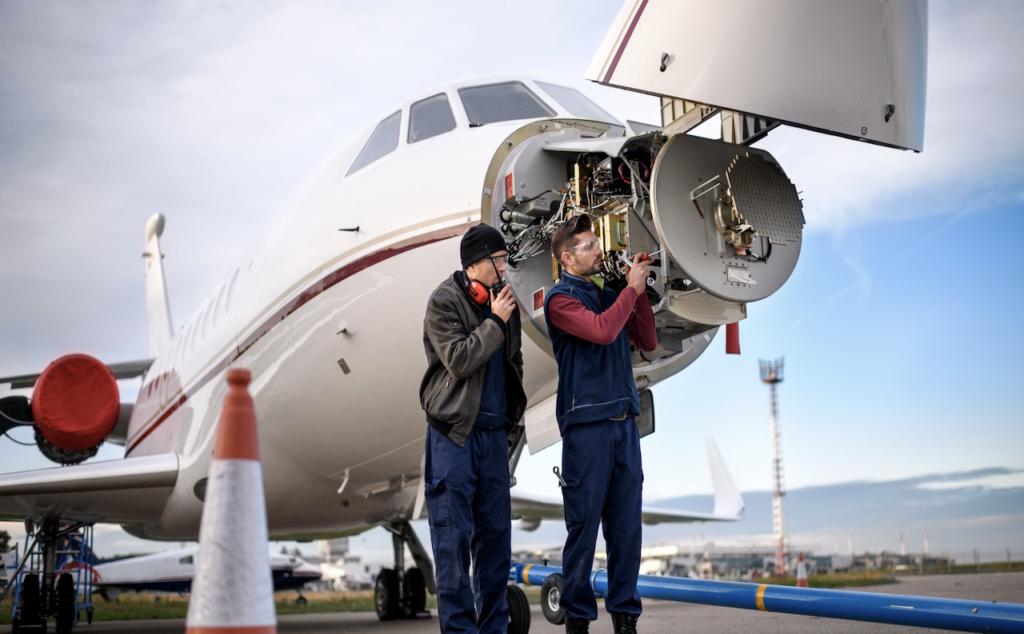
What does it really take to make the leap from being a maintenance technician to a Part 91 Director of Maintenance (DOM)? From my years of recruiting both technicians and DOMs, I’ve seen many careers take off. And while technical expertise is critical, it’s just the starting point.
To succeed as a DOM, you need to step up as a leader, communicator, strategist and mentor. The true challenge—and reward—lies in shaping the future of your team and department. When you cultivate an environment where people don’t want to leave, that’s when you know you’re truly leading.
What is a DOM?
A DOM isn’t just responsible for maintaining aircraft; they lead people and manage processes to keep operations running smoothly. If you aspire to be a DOM, your role will involve shaping the work culture, managing your team and ensuring alignment with the broader goals of your company. It’s a challenging role, but for those who are ready, it’s incredibly rewarding both personally and professionally.
In the business aviation world, a DOM plays a pivotal role in ensuring the safety and efficiency of the entire fleet. Here are some key responsibilities:
- Overseeing the maintenance department and daily fleet management.
- Maintaining aircraft and company records.
- Coordinating maintenance schedules with flight operations.
- Managing vendor relationships and overseeing inspections.
- Supervising and mentoring your team, from onboarding to development.
- Ensuring safety and regulatory compliance with the FAA and other regulatory bodies.
Skills Needed for a Technician to Succeed as a DOM
While a college degree isn’t always required, having one can give aspiring DOMs a competitive edge. Most importantly, you’ll likely need at least 10 years of aviation maintenance experience and an FAA Airframe and Powerplant (A&P) license. Proficiency in auditing, planning and a deep understanding of FAA regulations are also critical.
To transition from technician to DOM, you’ll need to develop skills that go beyond the hangar:
- Leadership: As a DOM, you’ll set the tone for your department’s success. Understanding the needs and motivations of your team helps you become a more effective leader. You’ll want to focus on building a team that trusts and feels supported by you.
- Business Acumen: Managing budgets, negotiating contracts and ensuring your department runs efficiently is important. Consider taking financial or business courses, or even studying to become a Certified Aviation Manager through the NBAA.
- Communication: Effective communication isn’t just about speaking—it’s about listening. Be sure to listen to others’ perspectives, ask clarifying questions and respond thoughtfully. Empathy helps communicate in a way that resonates, ensuring your message is not only heard but understood.
- Crisis Management: Aircraft On Ground (AOG) events will happen, but how you handle them speaks volumes about your leadership. Can you make strategic, swift decisions while staying calm under pressure? Test your problem-solving skills by asking your manager to involve you in unexpected challenges.
Advice for the Aspiring DOM
One of the most important qualities of a successful DOM is the willingness to keep learning. The aviation industry evolves constantly, and it’s essential to stay up to date on the latest technologies, regulations and trends. Here are some actionable steps to take if you’re serious about making the leap:
- Expand Your Responsibilities: Volunteer for roles beyond the technical. Join committees, take on safety initiatives and get involved in standards discussions.
- Develop Business Skills: Learn how to create budgets, understand financial reporting and become comfortable with administrative duties. These skills are essential for any leadership role.
- Advocate for Yourself and Others: Let your supervisors know that you’re interested in leadership opportunities. Speak up about your career aspirations and be willing to advocate team concerns when appropriate.
- Network: Stay connected with industry peers and groups. Aviation is an industry built on relationships, and a strong professional network will open doors. Don’t forget to register with API, so we can get to know you as your career evolves. That way, we’ll contact you when the right “next” opportunity comes along for you to consider.
- Seek Mentorship: Reach out to leaders—whether inside or outside your aviation department—who can guide you toward your career goals. Be open and honest about what you want to achieve and the areas where you want to grow. Their insights and experience will be invaluable as you face new challenges and strive to advance your career.
- Stay Involved: As you accomplish all of the above, remember to stay involved in as many repair and inspection projects as possible. There’s no substitute for hands-on experience using your tools. As a DOM, you’ll have the chance to bridge experience gaps within your team, and you’ll earn respect by rolling up your sleeves and working alongside them.
Conclusion
Becoming a Part 91 Director of Maintenance isn’t just a career advancement—it’s a commitment to leadership, safety and operational excellence. It’s about creating an environment where your team thrives, your fleet is maintained to the highest standards, and your department contributes to the larger goals of the organization.
So, do you have what it takes to make the leap from maintenance technician to DOM? If you’re ready for the challenge, start positioning yourself today. Leadership awaits those who are prepared to step up—and the journey is well worth it.
